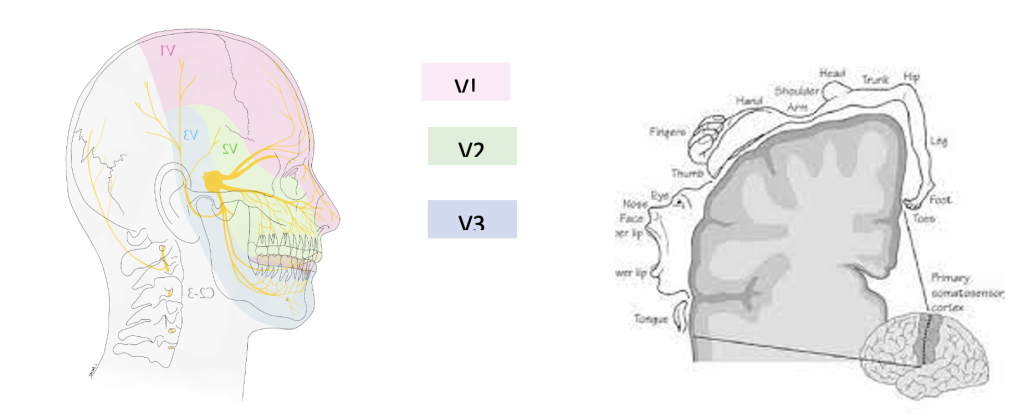NERVE INJURIES
The Trigeminal Nerve
The Trigeminal nerve name is derived from ‘three twins’ as it consists of a pair of ophthalmic divisions (V1s). a pair of maxillary divisions (V2s) and a pair of mandibular divisions (V3s), that supply general sensory feedback for your face, mouth, part of the lining of your brain (meninges), nose and eyes.

Figure 1. The trigeminal nerve and its dermatomes and somatosensory cortex representation.
The trigeminal nerve also includes motor nerves that supply your muscles of mastication (chewing jaw muscles). The trigeminal nerve also underpins some key reflexes that are also protective. The central connections of this nerve connect with C2 and C3 (cervical neck sensory nerves) explaining many headache conditions, with autonomic sympathetic and parasympathetic nerves (unconscious nervous system) and the trigeminal nerve has unique and direct connections the limbic system (the emotional part of your brain) leading to significant emotional and physiological impact when your’e threatened or experiencing pain in and around the face and mouth.
The importance of the Trigeminal nerve is reflected by the fact that is takes up over 50% of the somatosensory cortex (the brain area receiving all sensory input from the whole body) explains why pain in the orofacial region is so debilitating and impactful when compared with pain conditions in other parts of the body.
Read more in Renton/Van der Cruyssen article in Oral Surgery Journal

